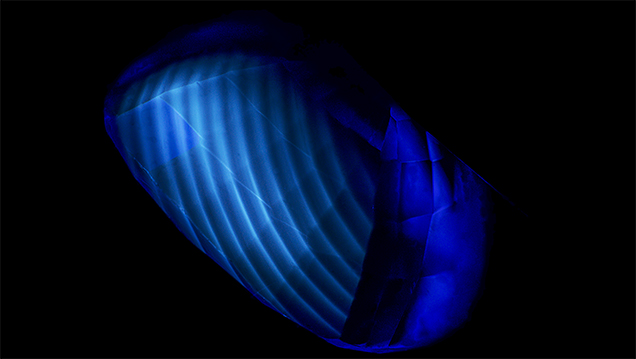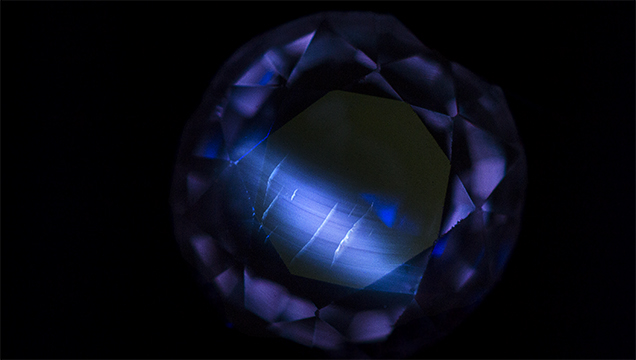Curved Banding in Flame-Fusion Synthetic Sapphires

Most synthetic ruby and sapphire on the market is grown by Verneuil flame fusion. It can usually be separated from natural corundum by its distinctive curved banding, in contrast to the angular zoning seen in natural stones. Gemologists may see these features in the microscope when using darkfield or brightfield illumination. This zoning can also be seen with use of a short-wave fluorescent light, as noted in Ruby & Sapphire: A Gemologist’s Guide (R.W. Hughes et al., Lotus Publishing, Bangkok, 2017).

Recently the author noticed two excellent examples. When viewed with the Magilabs deep-UV fluorescence system (a proprietary short-wave UV source), the curved banding in the synthetics was clear (figures 1 and 2), allowing them to be easily separated from natural corundum. Gemologists using a DiamondView may see the same reaction.



